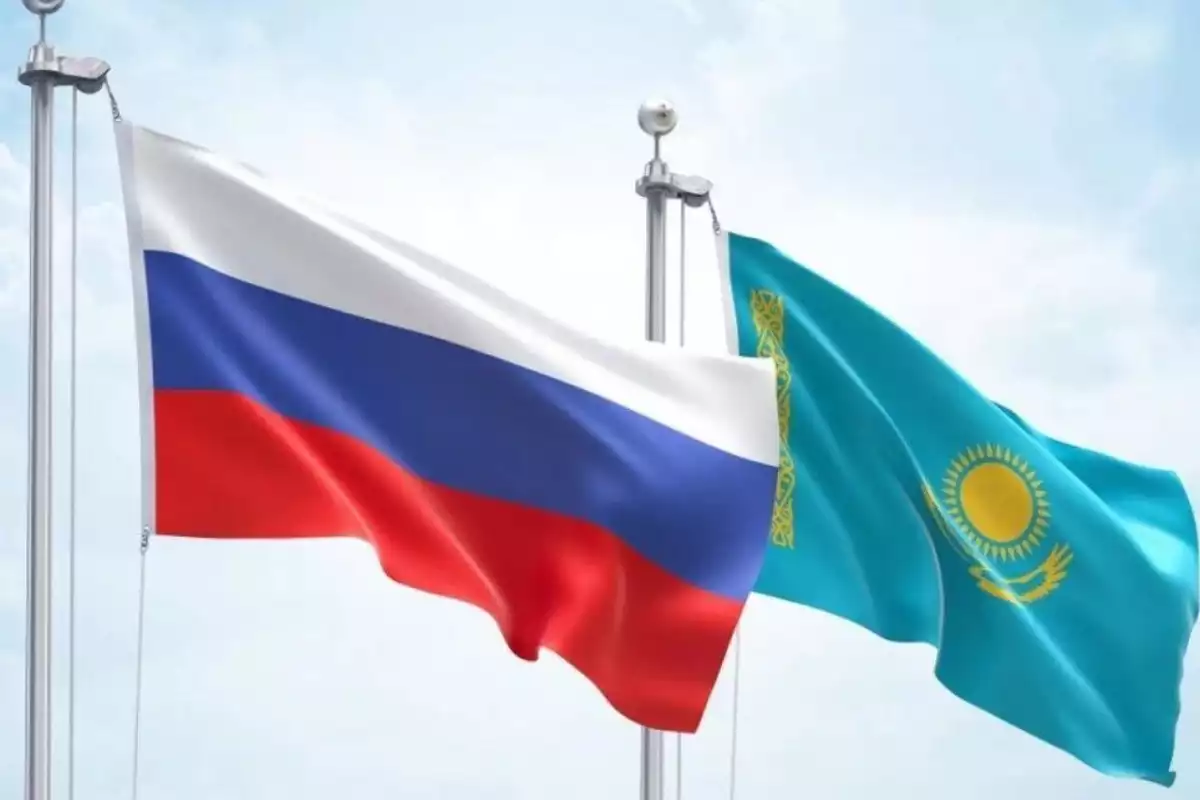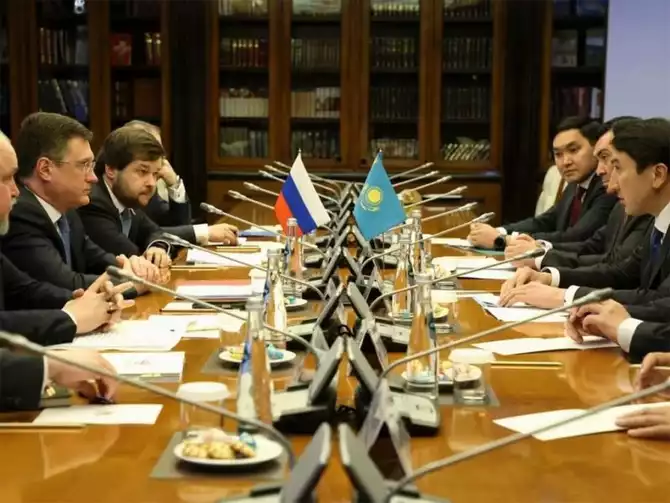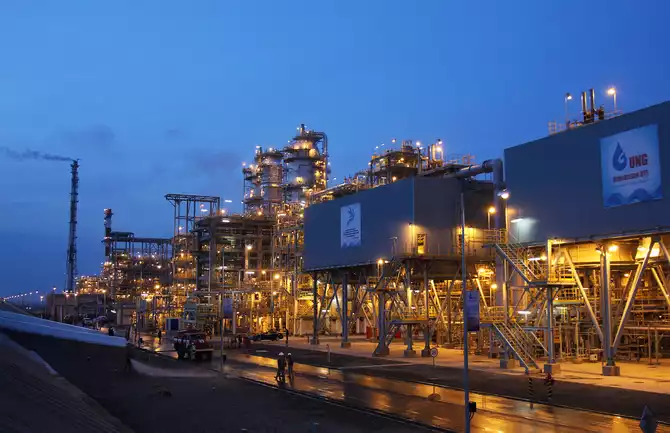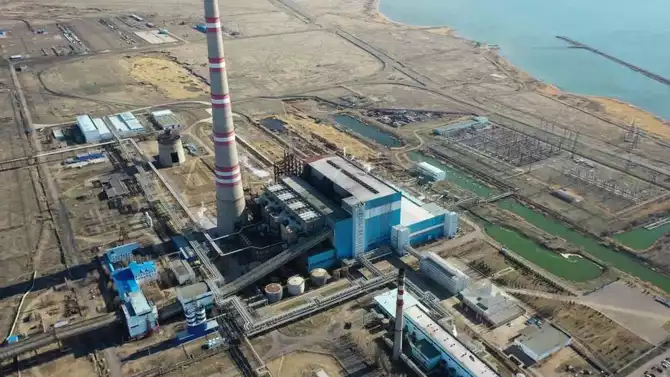
Photo: Embassy of Russia in Kazakhstan
By Asif Aydinly
Moscow and Astana are continuing to deepen their strategic cooperation in the energy sector, building a comprehensive partnership architecture encompassing hydrocarbon transit, infrastructure development, nuclear energy, and sustainable growth. The latest confirmation of this trend came during a meeting between Russian Deputy Prime Minister Alexander Novak and a Kazakh delegation led by Presidential Advisor Magzum Mirzagaliyev and Minister of Energy Alibek Akkenzhenov.

Photo credit: plenglish.com
Key items on the agenda included increasing oil and gas transit volumes, Russian companies’ participation in Kazakh energy projects, cooperation within OPEC+, and new areas of collaboration such as civil nuclear energy and renewables.
Russia is actively considering increasing hydrocarbon transit through Kazakhstan, particularly towards China and Uzbekistan. In January 2024, the two countries agreed to increase the transit volume of Russian crude oil to China from 7 to 10 million tons per year via the Tuymazy-Omsk-Novosibirsk-2 (TON-2) pipeline and the Atasu-Alashankou route.
At the same time, Kazakhstan uses Russian infrastructure to export oil westward. This includes the Uzen-Atyrau-Samara pipeline, with a capacity of 12 million tons per year, and the Druzhba pipeline (10 million t/y), as well as routes via Makhachkala (2 million t/y). The Caspian Pipeline Consortium (CPC) from Tengiz to Novorossiysk and its marine terminal have a total throughput capacity of up to 83 million t/y, enabling Kazakhstan to ship substantial volumes via Russian territory. Notably, Kazakh oil also reaches Germany through the northern branch of the Druzhba pipeline (1.5 million t/y).
In terms of gas, a dedicated route for Russian gas exports to Uzbekistan via Kazakhstan was launched in October 2023, using segments of the Central Asia-Center (CAC) pipeline that were converted to reverse flow. Following planned modernization, this pipeline is expected to increase daily flows to 32 million cubic meters - totaling 11.68 billion cubic meters annually by 2030.
Russia also aims to boost gas supplies to Kyrgyzstan to 800 million cubic meters per year within two years.

Photo credit: Reuters
Particularly noteworthy is the discussion on supplying Russian gas to Kazakhstan’s northern and northeastern regions. This initiative is linked to the proposed Russia-Kazakhstan-China pipeline, which could transport up to 35 bcm annually - with Kazakhstan potentially receiving 10 bcm for domestic use.
Russia is playing a key role in expanding coal-based power generation in Kazakhstan. Under an intergovernmental agreement signed in April 2024, Russian specialists will participate in constructing three coal-fired thermal power plants (TPPs) in Kokshetau, Semey, and Ust-Kamenogorsk. These projects are expected to add over 1 GW of new generation capacity, with commissioning dates set for 2027 (Kokshetau and Semey) and 2030 (Ust-Kamenogorsk).
Additionally, in August 2024, Kazakhstan’s sovereign wealth fund Samruk-Kazyna signed an EPC contract with a Russian-Kazakh consortium for the construction of Units 3 and 4 at Ekibastuz GRES-2, each with a capacity of 540 MW. Unit 3 is scheduled for launch in 2028, and Unit 4 in 2030. Upon completion, the plant’s total capacity will rise to 2,080 MW, making it one of the largest power stations in Central Asia.

Photo credit: check-point.kz
During Russian President Vladimir Putin’s state visit to Astana in November 2024, a bilateral agreement was also signed on reducing pollutant emissions at Ekibastuz GRES-2, reflecting both countries’ emphasis on greener energy practices.
The development of Kazakhstan’s first nuclear power plant (NPP) also highlights the deepening bilateral energy agenda. The project, with an expected capacity of 2.4 GW, is currently in the planning stages. Kazakhstan is considering several international technology providers, including China’s CNNC, South Korea’s KHNP, France’s EDF, and Russia’s Rosatom.
Kazakhstan's preferred model is a consortium, in which the Kazakh side would serve as the general operator. The winning bidder is expected to be announced by June 2025.
The strengthening of Russia-Kazakhstan energy ties comes amid a broader transformation of regional energy dynamics. As Europe moves to reduce its reliance on Russian energy, Asian markets - particularly China and Central Asia - are emerging as vital new outlets. Kazakhstan’s geographic location positions it as a strategic energy and logistics hub connecting East and West, North and South.
For Russia, stable partnerships across Eurasia are a strategic priority. As Deputy Prime Minister Novak emphasized, relations with Astana are among the top foreign policy priorities for Moscow. The partnership spans not only energy but also trade, investment, industrial cooperation, and infrastructure development.
Russia and Kazakhstan are showcasing a model of pragmatic and mutually beneficial energy cooperation. Their strategic alignment on transit, gasification, power generation, and nuclear energy reflects a shared vision for long-term regional integration. In an era of global uncertainty and shifting energy flows, Moscow and Astana are reinforcing the foundation of Eurasian energy security.
Share on social media